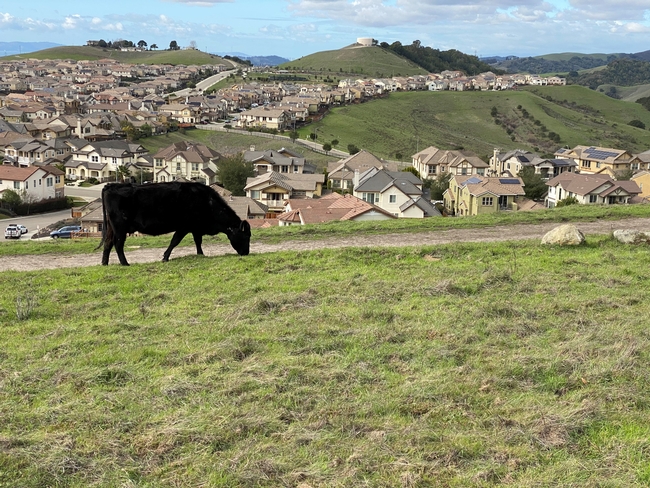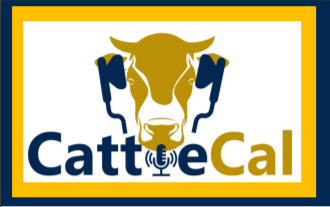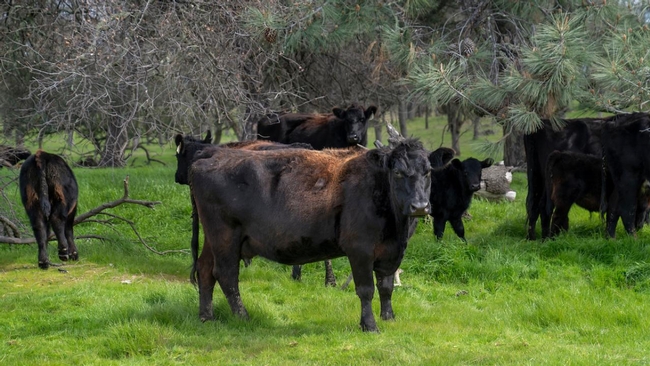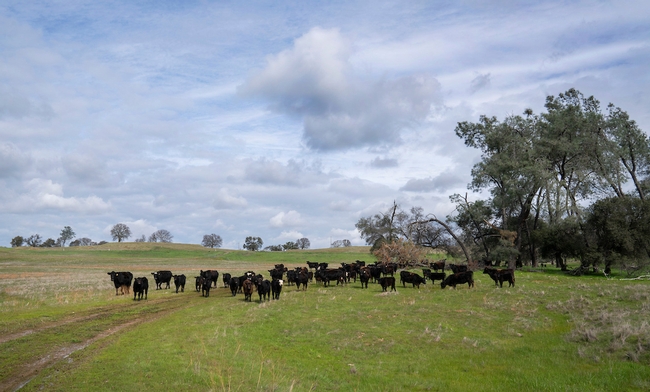
Posts Tagged: Beef Cattle
New Organic Livestock Rules Proposed
For producers doing organic livestock:
|
USDA/AMS Proposing New Organic Livestock Regulations
The United States Department of Agriculture's Agricultural Marketing Service proposes to amend the organic livestock and poultry production requirements by adding new provisions for livestock handling and transport for slaughter and avian living conditions; and expanding and clarifying existing requirements covering livestock care and production practices and mammalian living conditions.
AMS will host a virtual listening session on Aug. 19 from noon to approximately 2 p.m. eastern time to hear comments regarding this proposed rule. The deadline to register for oral comment is 11:59 p.m. eastern time on Aug. 15.
Click Here for more information.
Source: USDA/AMS |
USDA Offers Resources to Expand Meat Processing
USDA Offers Resources to Expand Meat Processing
The U.S. Department of Agriculture announced late last week the launch of the Meat and Poultry Processing Capacity Technical Assistance Program to provide technical assistance to meat and poultry grant applicants and grant-funded projects.
Processors and applicants involved with the Meat and Poultry Inspection Readiness Grant program and the Meat and Poultry Processing Expansion Program can access this technical assistance. USDA also announced it is now accepting applications for $23.6 million in competitive grant funding available through the MPIRG program.
Click Herefor more information.
Source: USDA
New UC ANR publication educates public on cycles of cattle production, grazing and economics
The pandemic has brought more people into nearby parks and public lands for hiking, biking and other recreational activities. In areas like the East Bay Regional Parks – a San Francisco Bay Area park system totaling more than 120,000 acres where about 65% of the land is grazed by livestock – visitors might see goats, sheep and, most likely, cattle.
Those encounters with animals (or their manure) represent a prime opportunity for members of the public to learn about agriculture and the ecological benefits of rangelands, according to Larry Forero, a UC Cooperative Extension livestock and natural resources advisor.

As livestock grazing (mostly by beef cattle) constitutes a significant portion of land use across the state, Forero – along with fellow UCCE advisors Sheila Barry and Stephanie Larson – recently authored a UC Agriculture and Natural Resources publication summarizing the mechanics of cattle production.
“Beef Cattle on California Annual Grasslands: Production Cycle and Economics,” published in October and available as a free download on the UC ANR Catalog, describes the seasonal phases of cattle production and the factors that impact ranchers' financial calculations and management decisions.
“This concise publication walks through annual stock flows and calendar of operations and gives tables for estimating costs, return over cash, and gross income under various scenarios,” said Forero.

“Even if only a relatively small percentage of park goers are interested, you still touch a lot of people with a document like this,” Forero explained.
He said he hopes park signage and QR codes will direct visitors to the publication for more information about the cattle and their seasonal movements.
“People often wonder where the cattle go when they leave the park and when they will return,” co-author Sheila Barry said. “The cattle may go to grass or feed yards in other places in California or even out of state.”
But, as this new UC ANR publication explains, the cattle production cycle turns over anew.
“There will be more cattle next fall, I promise,” Barry said.
California’s local meat suppliers struggle to stay in business
UC Davis report suggests ways to build resilience
The University of California, Davis, Food Systems Lab has released a white paper showing the need to support California's small and mid-scale meat suppliers and processors in order to build a more resilient meat supply chain. It describes how the meat supply chain and rural economies could benefit from regulatory changes and more collaboration among producers and other stakeholders in the system.
The pandemic shut down meat processing plants in 2020, as did recent ransomware attacks on JBS, the nation's largest meat supplier. Report authors said this highlights the need to support small- and mid-scale suppliers.
“COVID and the ransomware attacks put a spotlight on how the concentration of the meat supply chain increased vulnerability in the food system,” said report co-author Tom Tomich, founder of the UC Davis Food Systems Lab and distinguished professor in the Department of Environmental Science and Policy. “We need to level the playing field so small- and mid-scale farms have an easier way to bring their product to market.”
The report says the lack of access to slaughter facilities, limited capacity of cut and wrap facilities, and concentration of marketing channels create conditions in which small- and mid-scale farms and ranches struggle to stay in business.
“These challenges are exacerbated by policies that tilt the playing field against small operators. Fortunately, new state and national legislation and programs are developing that could increase resilience in our food systems,” says Michael R. Dimock, Roots of Change program director and lead author for the report. “We need cities and counties to help fix the problems because local land use policies often impede development of resilient supply chains.”
Lack of access and limited capacity
Smaller ranchers in California have limited access to slaughter and processing facilities. In the last 50 years, California has lost half of its federally inspected meat processing plants, and the remaining facilities are unable to meet demand. Many of the 46 USDA-certified slaughter plants operating in California are closed to smaller producers.
“This means that smaller ranchers must drive hundreds of miles to reach a facility or have to wait months due to limited capacity,” said Tomich.
The report said a combination of federal, state and private investments could provide a broader geographic distribution of plants of differing scales. It also suggests expanding mobile, on-farm slaughter operations for sheep, goats and hogs, similar to those for beef.
Regulatory barriers and opportunities
Complex inspection requirements and other regulatory barriers make it difficult for small- and mid-scale producers to compete with big suppliers. The report suggests California create its own meat inspection program equivalent to the federal program to serve smaller ranchers. Prioritizing public procurement of local, high-value meat would also help expand market access for smaller producers.
Broader benefits of smaller operators
The report notes other beneficial roles of small- and mid-scale livestock operations, apart from the potential to increase resilience in our food system. Livestock grazing is a cheap and effective way to reduce wildfire risk. Supporting local meat processing also helps rural economies and creates community-based jobs.
The report was based on 27 interviews with people representing a wide spectrum of activities and points of view within the meat supply chain throughout the state. Authors are Courtney Riggle, Allan Hollander, Patrick Huber and Thomas Tomich of the UC Davis Food Systems Lab, and Michael R. Dimock with Roots of Change.
Funding for the study came from the TomKat Foundation and USDA Hatch Program.
CattleCal Newsletter and Podcast
If you're interested in feeding cattle you're in for a treat! Colleagues of mine, in SoCal are producing an excellent newsletter and podcast called CattleCal. It's a joint effort by Pedro Carvalho, PhD, Assistant Cooperative Extension Specialist in Feedlot Management and Brooke Latack, UCCE Livestock Advisor - Imperial, Riverside, and San Bernardino Counties. 
Their podcast is available on Spotify and ITunes. You can subscribe to the newsletter at http://ceimperial.ucanr.edu/news_359/CattleCal_483/.
Here's a link to one of the May Spotify podcasts:
“Feedlot Research”
https://open.spotify.com/episode/2Nxnf2b6kbbwNYuDgQ6paO
Hope you find it interesting. Let me know what you think.



